This stage introduces some of the features associated with RTC scenarios. The switch-on level for the pump is increased and the 'TimeOff' rule is removed.

This stage assumes that you have started InfoWorks ICM and that Master database, containing the ICM Basic Tutorial, is opened in the Explorer window, showing the 'Langley Catchment Study' model group.
To modify the RTC scenario:
- Open the 'Langley RTC (Tut)' network.
- Select the Scenarios | Manage scenarios option from the Network menu.
The Manage Scenarios dialog is displayed.
- Click the Create... button and the Create New Scenario dialog is displayed.
- Name the new scenario 'Pump Control 3'.
- Check the Copy an existing scenario option and choose 'Pump Control 2' from the Scenario to copy drop-down list.
- Click OK.
The Create New Scenario dialog closes and the new scenario is added to the list of scenarios in the Manage Scenarios dialog.
-
Highlight the 'Pump Control 3' scenario in the list and click the Select button.
The scenario will open on the GeoPlan.
- Open the RTC Editor.
The RTC Editor is displayed.
- Change the level at which the pump switches on:
- Click the
 (Expand) buttons to the left of the 'Global' and 'Fixpmp' tems to display their dependents and adjust the column widths if necessary.
(Expand) buttons to the left of the 'Global' and 'Fixpmp' tems to display their dependents and adjust the column widths if necessary.
- Click the 'HighLevel' Range so that the details are displayed on the pane on the right.
- Change the Minimum value to '1.7'.
- Click the Update button.
- Add a comment to remind you of the change that has been made:
- Right-click the 'HighLevel' item and select Insert Definition | Comment from the pop-up menu.
- Type an appropriate comment in the right pane.
- Click the Update button. The comment is included in the list on the left pane.
- Validate the scenario:
- Right-click any item in left pane the RTC Editor and select Full
validation from the pop-up menu.
The validation process checks for errors in logic and displays a full description of the rules in the scenario.
- Close the 'RTC Validation Report' text window.
- Delete the 'TimeOff' range and rule:
- Right-click the 'TimeOff' range (below 'Global') and select Remove Dependent from the pop-up menu.
- Right-click the 'TimeOff' rule (at the bottom of the 'Fixpmp' list) and select Remove Dependent from the pop-up menu.
- Save the changes:
- Click the RTC Editor window's
 (Close) button
to close the dialog and a 'Save Changes' message is displayed.
(Close) button
to close the dialog and a 'Save Changes' message is displayed. - Click Yes to save the changes.
- Validate the network and its associated 'Pump 3' scenario.
- Commit the changes.
- Close the GeoPlan view.
- Run the simulation with the revised scenario:
- Open the 'Regulate Pump' run.
The Schedule Hydraulic Run dialog is displayed.
- In the Run title field, change the title to 'Regulate Pump (Increased Level)'.
- Click the Update to Latest button.
- Check the Allow re-runs using updated network box.
- Check the box next to the Pump Control 3 option in the Scenarios field.
- Click Run simulations.
A Schedule Job(s) dialog is displayed.
- Click the OK button.
InfoWorks ICM processes the run and its progress can be viewed in the Job Control window.
- View the simulation results:
- Open the simulation from the 'Regulate Pump (Increased Level)'
run.
The results are opened in the GeoPlan.
- Zoom in on the pump region.
- Use the
 (Graph pick) button to display
graphs of Level for '44636499' and Pump State for '44636499.1'.
(Graph pick) button to display
graphs of Level for '44636499' and Pump State for '44636499.1'. - Arrange the views horizontally.
- Close the GeoPlan and graph views.
The settings for all other options remain unchanged.
This tutorial has demonstrated how a simple RTC scenario can be set up and changed. With very little effort you can extend the scenario by adding more regulators etc. to simulate a variety of control options within the model.

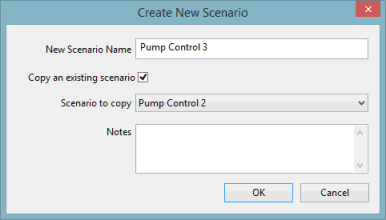
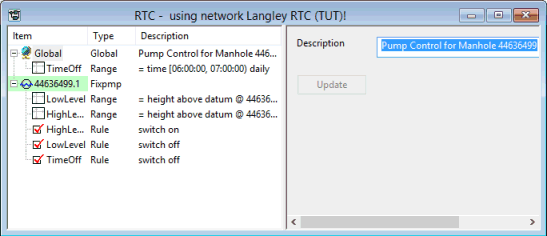
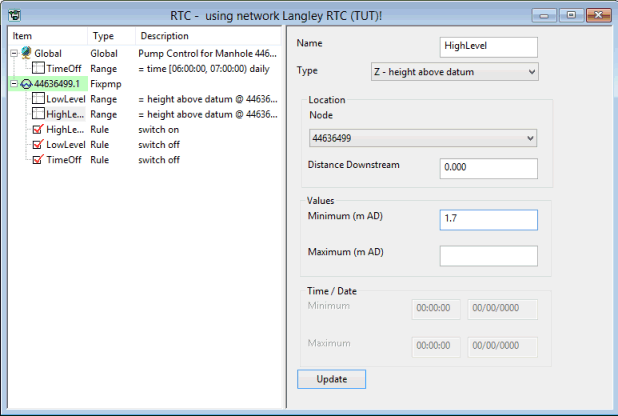
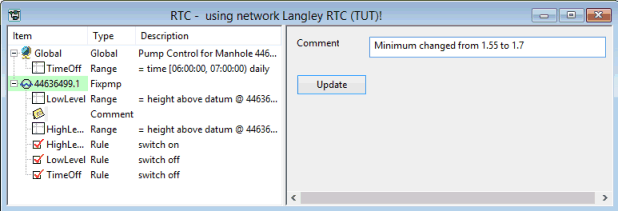
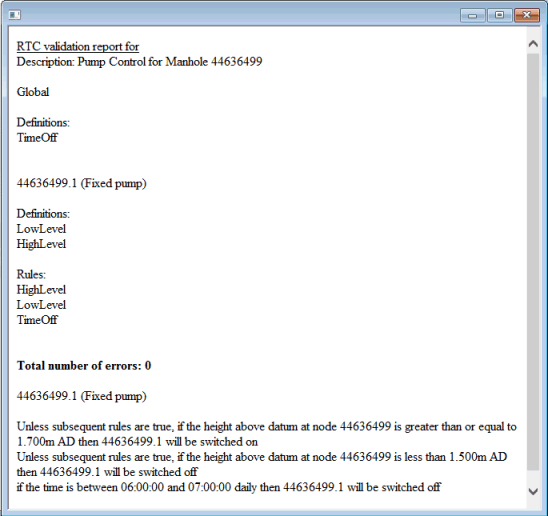
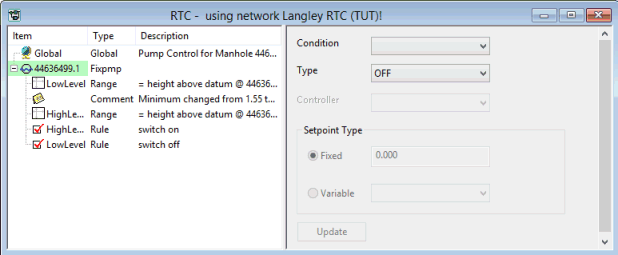
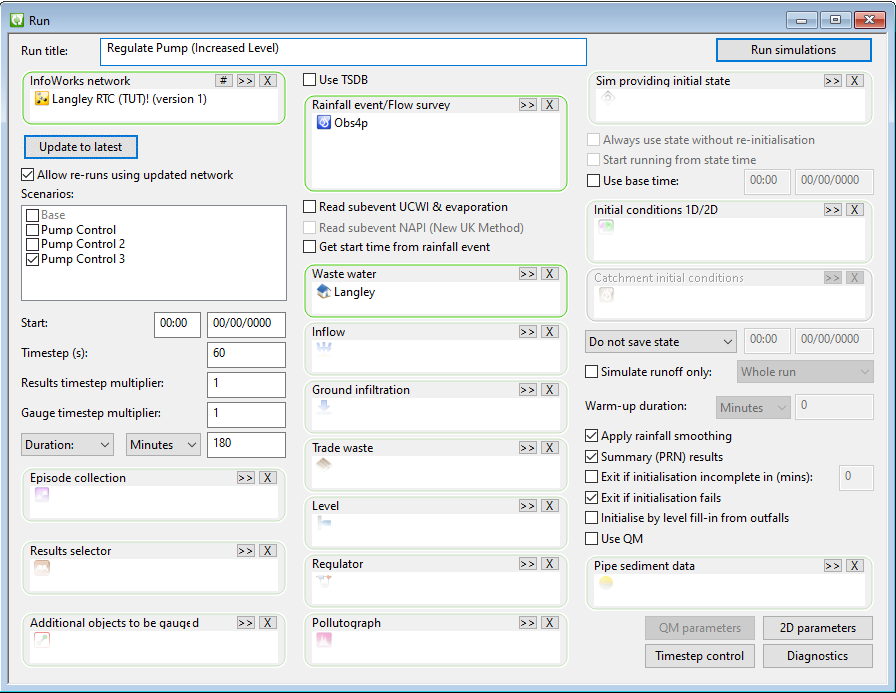
 (
(
